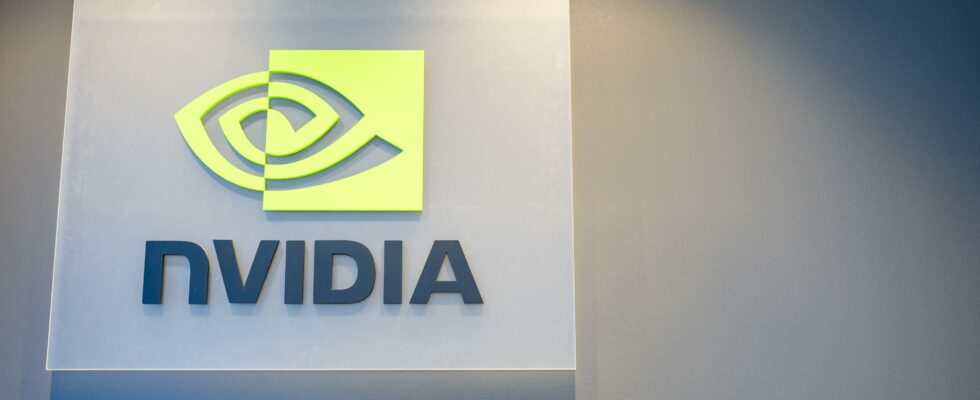The American semiconductor champion Nvidia once again largely exceeded expectations for its delayed third quarter and ensured that demand for its chips dedicated to artificial intelligence was not slowing down. Net profit stood at $19.3 billion, according to a company press release published Wednesday, November 20, a figure more than doubled over one year (+109%) and well above the $17.4 billion projected by the analysts, according to a consensus established by FactSet.
These results were eagerly awaited by Wall Street, because the Californian group is considered the standard-bearer of the generative artificial intelligence (AI) revolution. Nvidia is, in fact, by far the largest producer of so-called GPU (Graphics Processing Unit) chips, also called graphics cards, which are considered essential to the development of generative AI.
“The AI era is in full swing and is driving a global movement towards Nvidia products,” commented CEO Jensen Huang, quoted in the press release. “The demand is incredible for the Hopper and the expectation for the Blackwell, whose production is at cruising speed,” he added. “AI is transforming all industries, societies and countries.”
“A company like only one in a generation”
The Hopper is a family of microprocessors that includes the H100, the firm’s flagship product, by far the most popular in the sector and worth several tens of thousands of dollars each. In mid-March, Nvidia presented the Blackwell, a family of GPUs successor to the H100, which it describes as “the most powerful chip in the world”. “Deliveries from Blackwell should begin this quarter (which will end at the end of January) and accelerate” during the next financial year, indicated financial director Colette Kress. “We expect demand for Blackwell to exceed supply for several quarters” of next year, she said.
“These results reinforce the idea that Nvidia is a once-in-a-generation company shaping the next industrial revolution,” said Derren Nathan of Hargreaves Lansdown.
Turnover for this delayed quarter, completed at the end of October, reached $35.1 billion, up 94% year-on-year. For the last quarter of its fiscal year, Nvidia expects revenues to increase by 70%. Despite this pace of progress, the publication of the Santa Clara (California) company was received with reservation. The stock thus lost 1.70% in electronic trading after the close on Wall Street. “Sales forecasts for the fourth quarter did not reach the upper limit of the analysts’ forecast range,” notes Keita Yamaguchi of broker Monex Securities.
Dominant position
Among the few downsides, the fact that the company expects a slight decline in its gross margin for the current quarter compared to the previous one, to be in a range between 73% and 73.5%. This margin had already eroded in the second quarter, due to the use of more expensive systems in data centers, which are used to develop generative AI software, also called models. “We could look for the little beast, but many companies would tear their arm for a margin greater than 70%”, put Derren Nathan into perspective, “and this threshold does not seem to be in danger in the short term”.
Nvidia is looking to expand, particularly in automotive and professional visualization (graphics), but data centers still represent around 88% of its revenue. “Nvidia continues to demonstrate its dominant position in the AI chip market […] but fears remain about the rate of production of Blackwell and the concentration of customers”, reacted analyst Jacob Bourne. The big players in generative AI such as Microsoft, Google, Amazon Meta or OpenAI already use hundreds of thousands of GPU chips and thus constitute a significant part of the demand for Nvidia “Despite Nvidia’s technological advance. […]there is little room for a failure in 2025,” warns the analyst.
